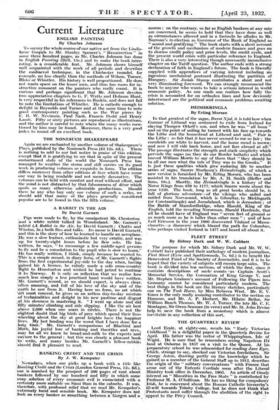HEIMSKRINGLA By Erling Morsen
In that greatest of the sagas, Burnt Njal, it is told how when Gunnar of Lithend was sentenced to exile from Iceland for slaying Thorgew Otkell's son, and when he was " all boun " and on the point of sailing he turned with his face up towards the Lithe and the homestead at Lithend and said, Fair is the Lithe ; so fair that it has never seemed to me so fair; the cornfields are white to harvest, and the home mead is mown; and now I will ride back home, and not fare abroad at all." The passage illustrates the strength and stark simplicity which pervade the sagas (as they do our Border ballads) and which moved William Morris to say of them that "they should be to all our race what the tale of Troy was to the Greeks." It is just these qualities which give enduring life to another series of sagas, Snorre Sturlason's Ileitnskringla, of which a new version is furnished by Mr. Erling Morsen, who has been assisted in his translation by Mr. A. I-E. Smith (Helfer and Sons, 18s.). Shortly, the Ileimskringla is a history of the Norse kings from 839 to 1177,-whieh Snorre wrote about the year 1230. The book, long as all great books should be, is full of glorious adventure—of the Vikings who sailed and raided from Norvasund, which is Gibraltar, to Mieldegarth (or Constantinople) and Jorsalaland, which is Jerusalem ; of the Battle of Stamfordbridge, when Harold, King of the English, told the invading Norseman, Harald Hardrade, that all he should have of England was " seven feet of ground or as much more as he is taller than other men " ; and of how Leif Ericsson in the year 1000 discovered Vinland or Massa- 'ehusetts—a discovery which blazed the path for Columbus, who perhaps visited Iceland in 1477 and heard all about it.






































 Previous page
Previous page